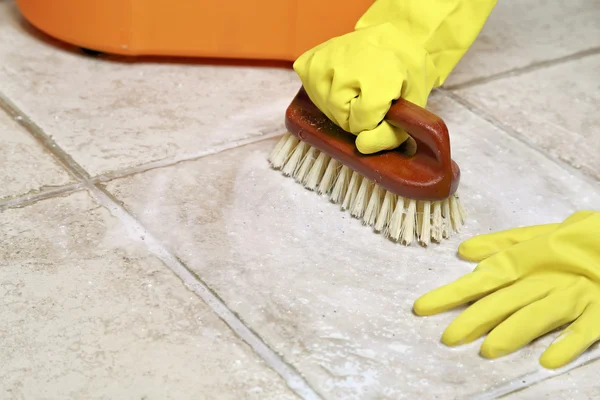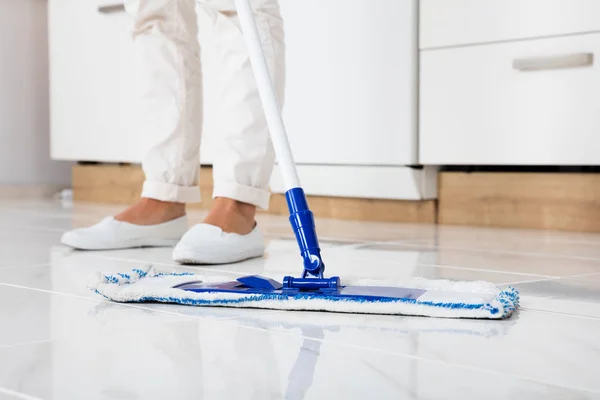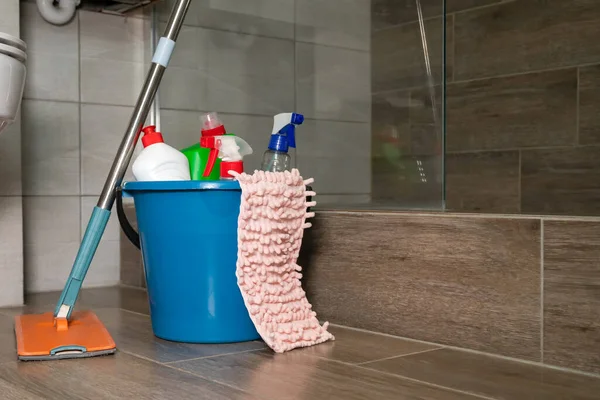
Keeping your tile floors clean is essential not only for maintaining their appearance but also for ensuring a hygienic living environment. Dirty tile floors can harbor bacteria, allergens, and grime, which can lead to health issues and a dull, unappealing look. By following proper cleaning practices, you can keep your tile floors looking their best and extend their lifespan.
The Importance of Cleaning Tile Floors
Cleaning tile floors is crucial for maintaining a clean and healthy living environment. The importance of cleaning tile floors cannot be emphasized enough. It not only keeps the floors looking tidy but also helps prevent the accumulation of dirt, grime, and bacteria. By regularly cleaning tile floors, you can extend their lifespan and preserve their appearance.
Moreover, properly cleaned tile floors play a significant role in improving indoor air quality, thereby reducing the risk of respiratory issues caused by dust and allergens. They also contribute to a safe living space by minimizing the chances of slips and falls on slippery surfaces.
To ensure the cleanliness and integrity of tile floors, it is essential to use appropriate cleaning techniques and products suitable for the specific type of tile. For routine maintenance, regular sweeping or vacuuming followed by mopping with a gentle cleanser is usually sufficient.
Preparation before Cleaning
To properly clean tile floors, start by sweeping or vacuuming the floor. Use a broom or a vacuum cleaner with a hard floor attachment to remove any loose dirt, dust, or debris from the tile surface. This initial step is essential as it helps prevent scratching when you begin the cleaning process.

Next, if you have a vacuum cleaner with a hard floor setting, use it to further remove any remaining dirt or debris. Make sure to vacuum along the grout lines as well to ensure a thorough clean.
After that, check for any stubborn stains or spills on the floor. If you notice any tough stains or spills, spot-clean them first before proceeding with the general cleaning. You can use a mild detergent or a specialized tile cleaner and a soft brush to gently scrub the affected area.
Once the stubborn stains are taken care of, it’s time to prepare the cleaning solution. Depending on the type of tile and grout you have, mix an appropriate cleaning solution. It’s crucial to avoid using harsh chemicals that can damage the tiles. Instead, opt for mild cleaners or natural solutions like vinegar and water.
Now it’s time to mop the floor. Dip a clean mop or microfiber cloth into the cleaning solution, wring out excess liquid, and mop the floor in small sections. Pay extra attention to high-traffic areas and areas prone to spills or stains. If the cleaning solution becomes dirty, don’t hesitate to change it.
Finally, use a dry mop or towel to remove any excess moisture from the floor. This step ensures a streak-free finish and helps prevent slipping.
Steps for Cleaning Tile Floors
From basic cleaning to tackling the tough stains in those grout lines, we’ll cover it all. Plus, for those seeking natural alternatives, we’ve got some eco-friendly cleaning solutions that will do wonders for your tiles.

Basic Tile Floor Cleaning
- Gather the necessary cleaning supplies, such as a mop, bucket, and a mild detergent specifically formulated for tile floors.
- Sweep or vacuum the floor to remove any loose dirt or debris.
- Fill the bucket with warm water and add a small amount of the detergent according to the manufacturer’s instructions.
- Dip the mop into the soapy water and wring it out until it is damp, not dripping wet.
- Starting in one corner of the room, begin mopping the tile floor, working your way towards the opposite corner. Be sure to overlap your strokes to ensure thorough cleaning.
- For dirty spots or stains, apply a bit of the cleaning solution directly to the area and gently scrub with a soft-bristled brush.
- Once you have mopped the entire floor, empty the dirty water from the bucket and refill it with clean water.
- Rinse the mop in the clean water and wring it out before giving the floor a final rinse. This will remove any remaining soap residue.
- Allow the floor to air dry, or use a clean, dry mop or towel to speed up the drying process.
- Admire your clean and shiny tile floor!
Deep Cleaning Tile Floors
- Prepare the area: Remove all furniture and objects from the floor to ensure a clear space for deep cleaning tile floors.
- Sweep or vacuum: Start by removing loose dirt and debris from the floor surface using a broom or vacuum cleaner with a hard floor attachment.
- Choose the right cleaner: Select a suitable cleaner for your deep cleaning tile floors. For ceramic or porcelain tiles, a pH-neutral cleaner works well, while natural stone tiles may require a specific stone-safe cleaner.

- Dilute the cleaner: Follow the instructions on the cleaner’s packaging to properly dilute it with water for deep cleaning tile floors. This will depend on the concentration of the cleaner.
- Apply the cleaner: Use a mop or sponge to apply the cleaner solution to the tile floors. For stubborn stains or heavily soiled areas, you may need to let the cleaner sit for a few minutes before scrubbing.
- Scrub the floor: Use a scrub brush or a soft-bristle brush to gently scrub the tile floors in a circular motion during deep cleaning. Pay extra attention to grout lines and areas with stains or buildup.
- Rinse thoroughly: Once you have scrubbed the entire floor during deep cleaning, thoroughly rinse it with clean water. This will remove any residue left from the cleaner.
- Dry the floor: Use towels or a mop to completely dry the tile floors to prevent slips and falls.
Natural Cleaning Solutions for Tiles
- Vinegar is a natural and effective cleaning solution for tiles. It can remove stubborn stains and grime. Mix equal parts of white vinegar and water in a spray bottle, spray it on the tiles, and then wipe clean with a damp cloth.
- Baking soda is another natural cleaning solution that can be used on tiles. Create a paste by mixing baking soda with water and apply it to the dirty areas. Let it sit for a few minutes, scrub with a brush, and rinse with water.
- Lemon juice is a natural disinfectant and can also remove stains from tiles. Mix lemon juice with water in a spray bottle and spray it on the tiles. Let it sit for a few minutes and then wipe clean.
- Hydrogen peroxide is a powerful cleaning agent that can be used on tiles. Mix equal parts of hydrogen peroxide and water in a spray bottle. Spray it on the tiles, let it sit for a few minutes, and then wipe clean.
- Essential oils like tea tree oil or lavender oil can be added to any of the above solutions to add a pleasant scent and boost their cleaning power.
Tips for Maintaining Clean Tile Floors
Maintaining clean tile floors doesn’t have to be a daunting task. In this section, we’ll discover some handy tips that can make your life easier when it comes to keeping your tile floors spotless. From regular sweeping or vacuuming to promptly wiping up spills, and even using protective mats or rugs, we’ll explore simple yet effective methods to ensure the longevity and cleanliness of your tile floors. Say goodbye to dirt and grime and say hello to sparkling tiles!
Regular Sweeping or Vacuuming

Regular sweeping or vacuuming is essential for maintaining clean tile floors. Incorporating regular sweeping or vacuuming into your cleaning routine helps prevent the buildup of dirt and debris on the surface of the tiles. This prevents potential scratching and extends the lifespan of the floor. It also contributes to a neat and presentable appearance, improves indoor air quality, and prevents allergens from accumulating. Additionally, regular sweeping or vacuuming reduces slip hazards by maintaining a clean and clear walking surface. By incorporating regular sweeping or vacuuming into your cleaning routine, you can ensure that your tile floors remain clean, safe, and in good condition.
Wiping up Spills Promptly
- When it comes to maintaining clean tile floors, it is crucial to prioritize wiping up spills promptly. This helps prevent stains and damage to the tiles and grout.
- Immediately grab a clean absorbent cloth or paper towel and place it over the spilled liquid to wipe up spills promptly.
- Gently press down on the cloth or paper towel to efficiently soak up as much of the spill as possible.
- Avoid rubbing the spill, as this can unnecessarily spread the liquid and make the clean-up process more difficult.
- Once most of the liquid is absorbed, use a damp cloth or sponge to thoroughly wipe the area clean.
- If the spill leaves behind any residue or sticky residue, dampen a cloth with a mild cleaning solution and delicately scrub the area to remove it.
- Rinse the cloth with clean water and use it to eliminate any remaining cleaning solution or residue.
- To prevent any moisture from seeping into the tiles or grout, dry the area thoroughly with a clean, dry cloth.
By diligently following these steps and wiping up spills promptly, you can effectively maintain clean and stain-free tile floors for years to come.
Using Protective Mats or Rugs
Using Protective Mats or Rugs is an important step in maintaining clean tile floors. Here are some reasons why:

- Prevent scratches: Placing protective mats or rugs in high traffic areas can prevent scratches caused by shoes or furniture. The fibers or cushioning of the mats act as a barrier between the tile floor and any abrasive materials.
- Reduce dirt and debris: Using Protective Mats or Rugs can trap dirt, dust, and debris brought in from outside. By using them near entryways or in areas where dirt tends to accumulate, you can minimize the amount of dirt that spreads onto the tile floor.
- Enhance safety: Using Protective Mats or Rugs provides an additional layer of grip on the floor, reducing the chances of slipping or falling. This is particularly important in areas prone to moisture, such as bathrooms or kitchens.
- Protect spills and stains: Using Protective Mats or Rugs can act as a shield against spills and stains. They can absorb liquid quickly, protecting the tile floor from potential damage.
Make sure to choose mats or rugs that are non-slip and easy to clean. Regularly shake or vacuum them to remove trapped dirt and debris. Consider using mats with a rubber backing to prevent slipping and sliding on the tile floor. By using protective mats or rugs, you can extend the lifespan and cleanliness of your tile floors.
Consider hiring a professional cleaner if you think you are too busy to do these things. Reach us at Ivy Cleans so our experts can assist you with your cleaning needs.
